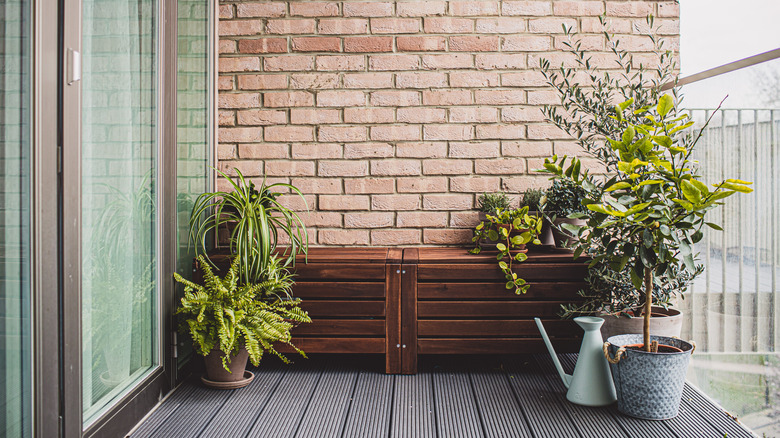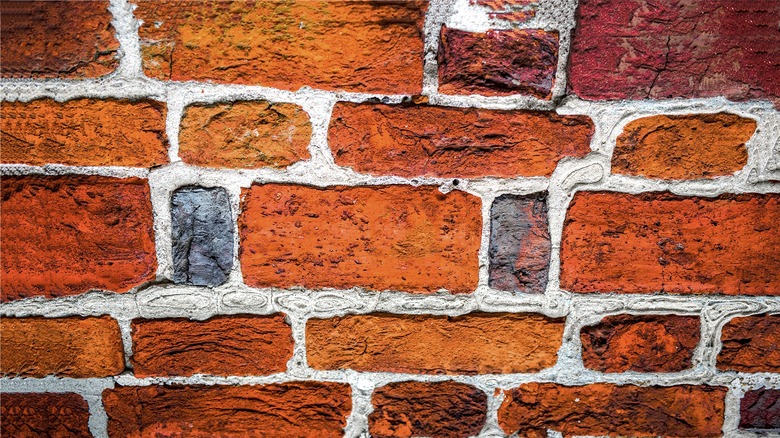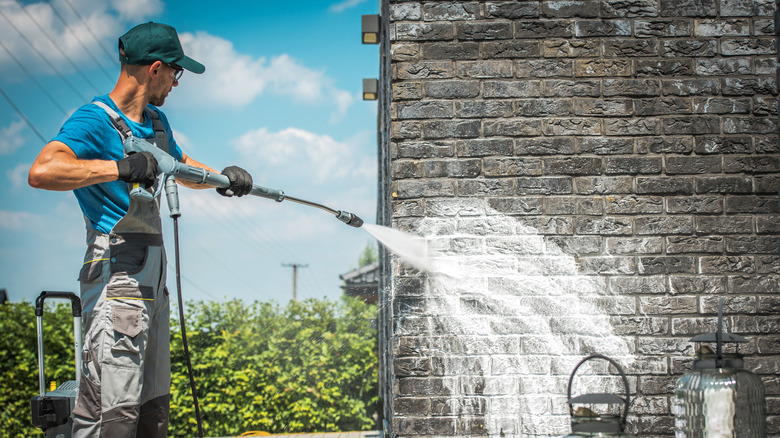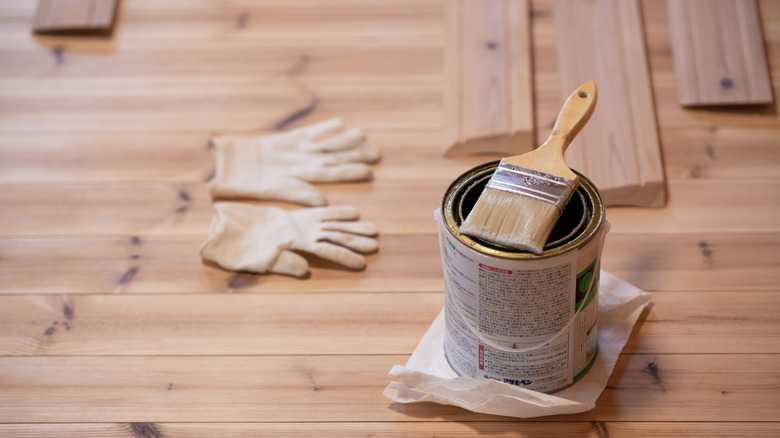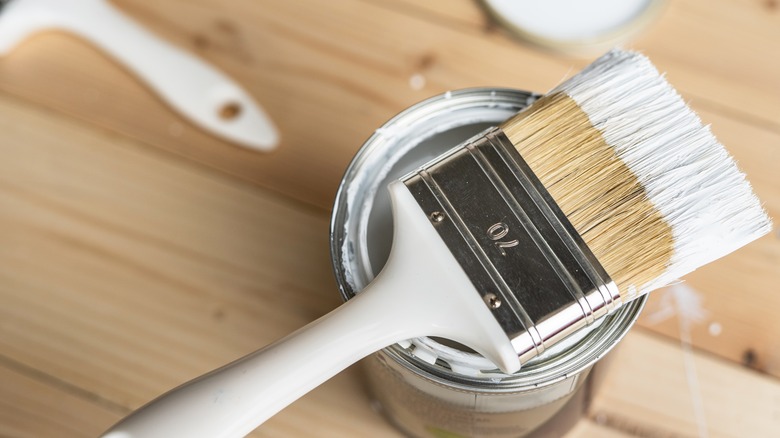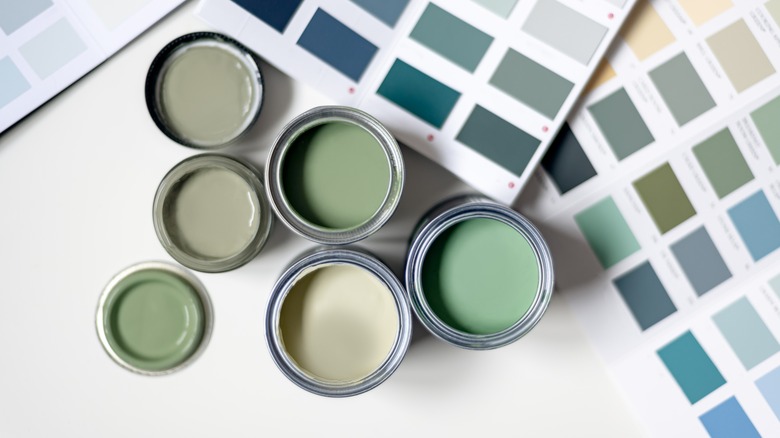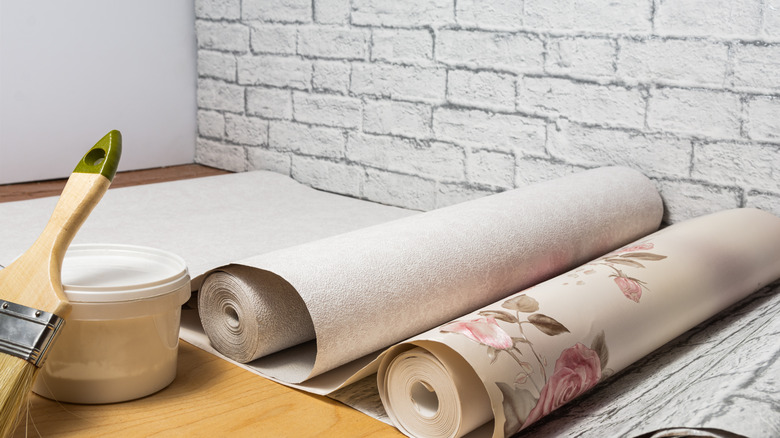The Right Way To Paint Brick Walls
Brick walls can be a beautiful addition to any home, but there may come a time when you want to change their color. Painting brick walls can be a bit tricky, but with the right preparation and technique, you can achieve great results.
Brick houses and buildings tend to be built with a rough, textured surface. This can make painting brick walls somewhat challenging, but there are many benefits to having a brick house. According to Angi, brick homes are eco-friendly, durable, and low maintenance.
Their long-lasting appeal, in particular, is one of the main reasons why people choose to build with brick in the first place. According to Trip Advisor, Bacon's Castle remains the oldest brick structure in the United States, having been built in 1665. Over 300 years later, it now stands as a historic landmark and a testament to the durability of brick homes.
In this article, we will teach you the right way to paint brick walls so that you can avoid any common mistakes and make your bricks look amazing!
1. Determine if brick can be painted
Not all brick is created equal. The first step in painting brick walls is determining if your bricks can be painted. According to Realtor.com, porous bricks are more likely to absorb paint, while non-porous bricks resist it.
Homeowners should wait about a year before painting newly-built brick structures. This allows time for leaching, which is when water seeps out of the brick, causing it to become less porous. If your brick is damaged, you may want to repair it before painting. This includes filling in any cracks or chipping away at loose mortar.
2. Clean brick before painting
Before painting, you need to clean your brick surfaces. For interior cleaning, Realtor.com, recommends vacuuming and using a damp cloth to remove dirt, cobwebs, mildew, and efflorescence (the white crystals that can form on bricks). Then use a cleanser, water, and a stiff brush. Rinse the area and let it dry for at least 24 hours.
For exterior cleaning, power washing is the best way to remove dirt, dust, and grime. Pressure Washers Direct suggests using a pressure of 800 PSI or lower. Avoid cleaning in one spot too long as this can damage the brick.
3. Apply sealer as needed
Moisture can cause paint to peel away from brick walls, so you must apply a sealer before painting. Realtor.com recommends applying a layer or two of masonry sealer. This prevents moisture from seeping into the brick and causing the paint to peel.
Cover all of your brick using a roller or a brush. Be sure to get into the nooks and crannies, as this will create a barrier between your brick and the paint. How long the sealer takes to dry will depend on the manufacturer, so be sure to read the instructions carefully.
4. Prime your brick surface
Now that the sealer is dry, you can prime your surface. According to Image Works Painting, some masonry surfaces have a high pH or a high amount of efflorescence. Primer will help neutralize the surface and create a smooth texture, making painting easier and giving you better results.
Realtor.com recommends covering the entire area you intend to paint using a masonry primer. Depending on the quality of the brick, you may need to apply more than one coat. As with the sealer, you'll want to read the manufacturer's instructions carefully to determine the drying time.
5. Choose the correct paint
According to Realtor.com, when selecting paint, it's important to choose high-quality masonry paint. This type of paint is specifically designed to adhere to porous surfaces like brick.
Make sure your roller or brush is appropriately sized for the job. Smaller rollers are best for tight spaces, while larger ones can cover more surface area quickly. You'll want to select a paint color appropriate for your brick. Sharper Impressions Painting Co. recommends neutral colors such as white, light gray, charcoal, and green. You can also paint an exterior accent wall to pair with natural brick.
6. Begin painting your surface
It's finally time to paint! According to Behr, you'll want to begin by pouring your masonry paint into a bucket. From there, you'll create a perimeter with a recommended 2 to 2.5-inch brush before pouring the paint into a tray. Then, start covering your brick surface using a roller.
Be sure to move the roller in different directions to ensure even coverage. Pick a corner and start rolling in a "W" formation. You'll want to do this until the entire surface is covered. You may need to apply additional coats depending on the color.
